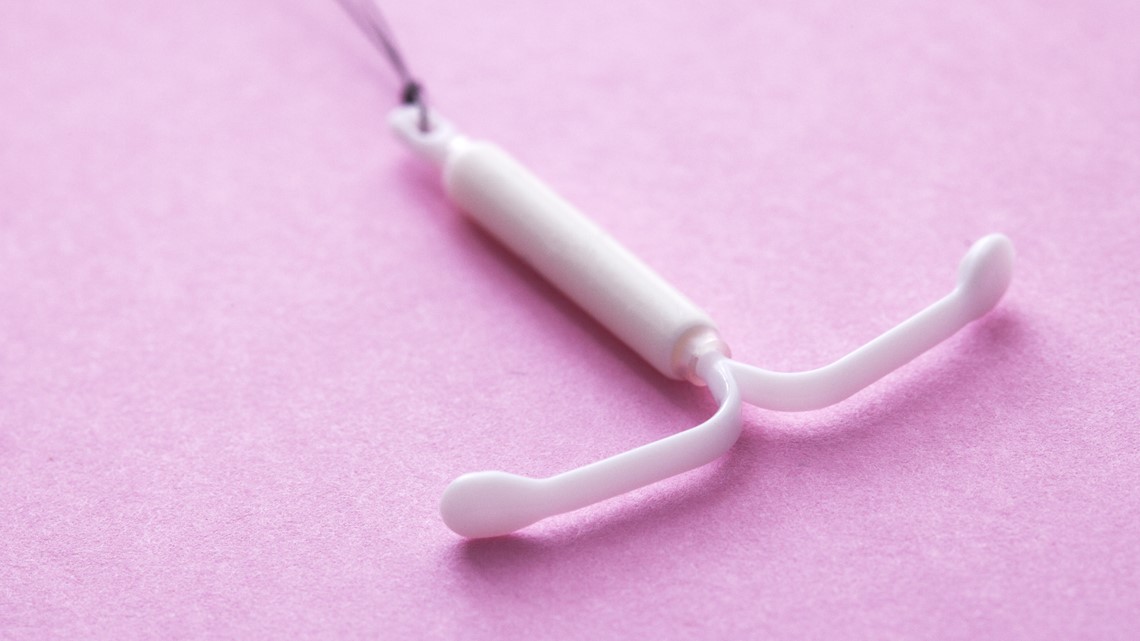INDIANAPOLIS — What do honey leaves, fish bladders, and rubber condoms have in common? All have been used as contraceptives at some point.
Since the start of recorded history, humans have found innovative ways to try and prevent unwanted pregnancies.
The first record of people using birth control was in 3000 BCE, when ancient societies in Crete and Egypt made condoms from animal or fish bladder. Medieval Europeans favored animal intestines – goat, sheep, fish – for their condoms, or otherwise wore amulets fashioned from dead animals. Weasel testicles were popular to ward off unwanted pregnancies.
Some Chinese communities took birth control pills as well, but they were made of poisonous mercury. A mix of crocodile dung, ant paste and honey, inserted into the vagina, was used in Ancient Egypt.
Bizarre though some of these methods may seem to us now, they paved the way for modern birth control.
Pessaries - small, round vaginal inserts that block ejaculation and made of natural materials like sponge, were a predecessor to diaphragms - became popular once vulcanized rubber was invented around 1839.
The first rubber condom was invented in 1855. However, around this time, the U.S. government began actively working to enact anti-birth control measures across the country.
In 1873, Congress passed the Comstock Act which criminalized utilizing the U.S. Postal Service to mail sexually obscene material through the mail, and that included birth control. The postal service was also given the authority to confiscate birth control in the mail.
None of that stopped women from using birth control. Women utilized nature-based pessaries or sponges to prevent pregnancies, while rich women often bought birth control from Europe.


White women could purchase these items discreetly. However, Black women in America were forced to rely on folk remedies to prevent unwanted pregnancies from white men. One 2018 study showed an estimated 58% of all women and girls who were enslaved in the U.S. between ages 15 and 30 experienced sexual assault. Teas made from cocklebur roots were common among women who were enslaved as a way to prevent unwanted pregnancies.
World War I played a major role in birth control becoming more accessible for American women.
Women were left at home with children who, at that point, were making their way out of the workforce and into classrooms due to new legislation which mandated childhood education, and stripped away the use of children in the workforce.
When men were shipped overseas to fight in World War I, women went in to work in their place. Having children was not a priority under the circumstances.
Meanwhile, prostitution industries sprang up around army bases and seaports around the world. The U.S. Navy faced an epidemic of venereal disease. Condoms were soon standard issue for sailors, and they were not keen on giving them up once the war ended.
While men could go to drug stores and legally purchase condoms after the war, women were still not allowed to take their birth control into their own hands.
In 1916, Margaret Sanger tried to open the first birth control clinic in the United States. She has since been criticized for racism, and willingness to align with eugenicists and white supremacist groups within the birth control movement, but went on to found the first birth control league in the U.S.
As doctors and researchers worked to produce a pill that could prevent pregnancy, diaphragms and condoms remained the primary method of birth control.
Activists began advocating harder for access to birth control when the Supreme Court ruled the Comstock Act was unconstitutional and, in 1940, The National Council of Negro Women became the first national women’s organization to officially endorse the practice of contraception.
By 1950, Sanger had achieved funding to research a potential birth control pill. The pill was eventually approved in 1957, but only for menstrual issues.
It was finally approved to prevent pregnancy in 1960, against considerable backlash from conservative Americans and religious organizations.
Eight years later, the FDA approved intrauterine devices, or IUDs. Within a few years, more than 10% of women were using the devices for birth control.


The pill paved the way for other hormonal-based birth control methods we see today, like the IUD, vaginal ring, patch and implant.
By the late 1990s, the FDA had approved Praven and Plan B, the first emergency contraceptives available on the market.
Today, there are more methods of birth control, and women have countless ways to control their own fertility and lives.


So, which method is right for you?
Finding the right kind of birth control can be a pain. It is common for women to try out multiple types to see which one works best for their lifestyle.
"I want to make sure that everyone knows it's important to have access to a range of methods. No one method may be best for any one person. And people, oftentimes, may choose one and then decide to switch to another for a variety of reasons," said Dr. Krishna Upadhya, a physician and vice president with The Planned Parenthood Federation of America.
We spoke with Dr. Upadhya about the pros and cons behind some of the more popular kinds of birth control, and the science behind them, so you can get a sense of which one work best for you.
Birth control pill
The most common form of birth control in the U.S., the pill uses estrogen and progestin to reduce the chance of ovulation. The hormones involved in the pill can also affect the mucus that blocks sperm from fertilizing an egg.
Not all women who take birth control pills use them exclusively just for contraceptive reasons. A study conducted by the Guttmacher Institute found 31% of pill users used them to reduce cramps or menstrual pain, 14% used it primarily to treat acne, and another 4% used it to treat endometriosis.


"Besides preventing pregnancy, they can also reduce the pain and frequency of periods, and the flow of periods," Dr. Upadhya said.
Another benefit of the pill, for women wanting to get pregnant, is that you become fertile very soon after stopping the pill.
However, that can also be a downside of this method. The pill must be taken every day, and requires a stable schedule, in order to be effective.
IUD
This tiny, T-shaped piece of plastic has the huge benefit of a one time placement.
Unlike the pill, which must be taken at the same time every day, intrauterine devices are inserted once, then are effective for a number of years.
There are two types: hormonal and non-hormonal copper IUDs.


The hormonal IUDs work similarly to birth control pills, and impact cervical mucus in similar ways. They can also have some affect on ovulation and can reduce period flow and pain associated with period.
"With the copper IUDs, some people really don't want hormones in their body. And so, having an option that's highly effective that doesn't involve hormones can be seen as a benefit. It also doesn't eliminate your menstrual cycle. And some people feel more comfortable knowing that they're getting a period every month," Dr. Upadhya said.
Non-hormonal IUD, or copper IUDs, create a hostile environment for sperm. Sperm and copper don't mix well, which impacts sperm's ability to fertilize an egg.
However, implantation of IUDs can be painful for some women. The non-hormonal IUD can also cause painful or heavier periods.
Birth Control Patch
Birth control patches are another option for people who do not want to have to remember taking a daily pill.
The science is the same as a combined hormonal pill, or the most common birth control pill, in patch form. It has two types of hormones, progestin and estrogen, that work together to reduce ovulation and affect vaginal mucus.


The patch is something that you put on, and you only have to change it once a week, but can cause PMS like symptoms.
Vaginal Ring
Vaginal rings, like Nuvaring, are soft, circular plastic rings that are inserted inside the vagina, similarly to a tampon. They release the same hormones as the pill, patch and hormonal IUD.
The ring can also cause premenstrual side effects. Vaginal irritation is another common side effect, and there's more of a chance your partner could feel it during intercourse.
Condoms
Today, condoms remain the only birth control method that is mostly effective with preventing STIs.
Doctors recommend utilizing one of the other methods of birth control in conjunction with condoms.
"I always want to make sure that people also understand that one of the downsides of all these methods of contraception, is that they don't protect against sexually transmitted infections. And so, it's also really important for people to understand that condoms are really important because they can prevent that," Dr. Upadhya said.
You can also download the free period tracker and birth control app Spot On, which lets you track your period, cycle, fertility, or any method that affects your cycle, including pill, patch, ring, shot, IUD, or implant.

